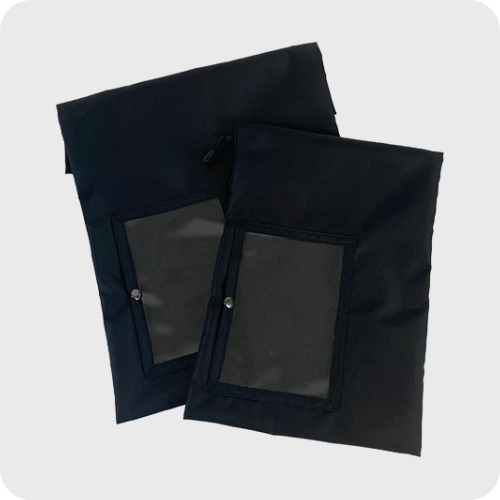When To Consider Reusable Packaging for Ecommerce (in 2022)
Posted By on Feb 3rd 2022
Reusable packaging is a no brainer in certain areas, such as reusable grocery totes, refillable glass jars, reusable water bottles, reusable coffee mugs. In these scenarios, a person purchases their reusable items, keeps them on hand, and typically uses them hundreds if not thousands of times before they reach the end of their useful life.
Watching these trends, some leading sustainable brands are asking - should I consider reusable packaging for my ecommerce shipments? A handful of exceptional studies have come out recently digging into these questions. Here, we share highlight of what we've learned in our own journey of exploring reusable options and introduce the latest addition to our sustainable packaging line - the ReEnclose Mailer.
If companies are not careful, it is very easy for reusable ecommerce packaging to end up as a counterproductive strategy, one that may feel more sustainable to consumers but actually leads to more waste and carbon emissions than single use options.
For example, let's compare two mailers - a reusable PET mailer and a single use LDPE mailer. In this scenario, let's assume both are made with virgin content. The reusable option likely uses 20-30+ times more material than the single use poly mailer. Additionally, the reusable option is likely not recyclable at the end of its life, while the single use poly mailer can be recycled in thin film. This means that if the reusable option is used less than 30 times, it will end up creating more material waste in landfills than the single use poly mailers it is trying to replace. This basic analysis does not begin to take into account the carbon footprint of transporting reusable packaging back and forth.
Our review of the existing research conducted has shown that several factors must be assessed when considering reusable packaging.
- Average cycles: Reusable packaging is significantly more energy and resource intensive to produce than single use alternatives. This makes sense as reusable mailers have to be much more durable. Because of this, the single most important factor to consider is "how many times do you anticipate the reusable packaging to be reused before it is lost or damaged?" Remember the question is not "how many times can the reusable option be used" because with ecommerce packaging, we need to rely on end consumers to send packaging back. In a culture in which consumers are finding it difficult to drop their thin film plastic into bins at stores they go to each week, it may unreasonable to expect a high percent of individuals to take the time to send their mailers back.
- Transportation and cleaning: Reusable mailers have to be shipped back to a distribution center and have to be cleaned before they are used again. Factoring in the carbon footprint and resource requirements of these shipments is critical to assessing which option is preferred. Research has shown that it is difficult to make reusable packaging ecologically superior with centralized distribution models (where reusable packaging is shipped back to one or two location that are often very far from the households they are serving). There is more promise with decentralized models. Additionally, it is preferred that the mailers are cleaned in-house and not sent elsewhere to be cleaned, minimizing the need for extra transit and distribution.
- Recycled content of the reusable packaging: We spoke to one provider of reusable packaging who felt that if the packaging was reusable, that should be good enough, and the recycled content and end of life of the package isn't important. This is most definitely not true. In fact, since our single use options are already 100% recycled (with 50% post consumer waste), we have found that the sustainability of inputs into any reusable alternatives is essential if the reusable mailers will ever stand a chance at being more eco-friendly than single use.
- Recyclability of the reusable packaging: Again, the recyclability of a reusable mailer is critical, otherwise it is likely that a reusable mailer ends up as waste after a dozen or so uses, creating more landfill bound waste than the equivalent amount of single use mailers would have generated. If the only solution is a reusable mailer designed to be landfilled, it is even more important that the average cycles is extremely high.
Reloop put forth an incredible meta analysis of research conducted on the pros and cons of reusable packaging. Here is one diagram that shows important steps to be taken for reusable glass bottles in order for them to continue being superior to single use plastic counterparts. We were struck by the fact that these same steps are essential for reusable mailers as well.
One excellent Fashion for Good study found that reusable packaging is only superior to a recycled poly mailer if packaging return rates are close to 100% and there are decentralized points of return. With return rates below 95%, there is a net increase in CO2 missions when moving to the reusable mailer.
We believe such high return rates can be feasibly expected (today anyway) only in business models where returns are core to the service. StitchFix, Rent the Runway and Trunk Club are all examples of this type of business model.
For now more standard B2C businesses in which such high return rates are unlikely, we have seen that reusable packaging may create more damage to the environment than a 100% recycled and recyclable poly mailer or paper mailer. If that single use mailer is actually used twice, which our poly mailers are designed for, this makes it even harder for the reusable shipping solutions to compete.
Click here to learn more about our 100% recycled poly mailers and our 100% recycled paper mailers.
Introducing Reusable Mailers at EcoEnclose
In our mission to make packaging truly circular, we are thrilled to now be introducing reusable mailers into our line of sustainable packaging to continue our mission - the ReEnclose Mailer!
EcoEnclose ReEnclose Mailers are designed to be shipped to your customer to deliver their order, and then shipped back to your distribution center to be used for another order. Available in multiple sizes, colors, and material weights, ReEnclose Mailers are an ideal shipping solution for brands who have returns baked into their business model. Customization is also available, from material weight, to fabric color, to mailer size and more.
We commit to analyzing the environmental impact of this packaging switch to ensure it is the right solution for your business. Explore our Reusable Mailers Sustainability Calculator which is designed to help you estimate how many uses or "cycles" your reusable mailer has to go through to ensure it has the equivalent carbon footprint of poly mailers you are replacing.
Shop EcoEnclose ReEnclose Mailers
100% recycled fabric with zipper and snap closures. Designed for multiple uses and recyclability at the end of their useful life.
About EcoEnclose
EcoEnclose helps forward-thinking brands deliver on their sustainability goals with innovative, research-driven packaging solutions designed for circularity.


